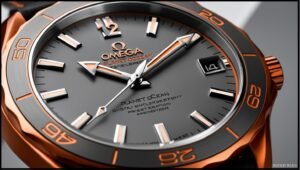Understanding Pre-Woven Plastic Wicker Webbing in Modern Furniture Design
Regarding outdoor furniture, only some materials have captured the attention of designers and homeowners, such as pre-woven plastic wicker webbing. Once seen as merely a replacement for natural wicker, this synthetic material has evolved to offer unparalleled durability, aesthetic versatility, and an environmentally friendly option for various furniture designs.
This article will explore what pre-woven plastic wicker webbing is, why it’s become so popular in modern design, and how it compares to other materials like natural wicker. We’ll also touch on its practical applications, maintenance tips, and the sustainable benefits it offers.
What Is Pre-Woven Plastic Wicker Webbing?
Pre-woven plastic wicker webbing is a synthetic material designed to mimic the look of natural wicker, typically made from rattan or bamboo. It is created by weaving high-density polyethylene (HDPE) or other durable plastics into patterns that resemble traditional wicker.
The term “pre-woven” refers to woven material, allowing manufacturers and DIY enthusiasts to attach it to frames of furniture or other products easily. This webbing is resistant to weather, UV rays, and moisture, making it ideal for outdoor furniture, as it can withstand the elements much better than natural wicker.
Advantages of Pre-Woven Plastic Wicker Webbing Over Natural Wicker
There are several key advantages to using pre-woven plastic wicker webbing in place of natural wicker:
- Durability
Natural wicker, while beautiful, is prone to breaking down when exposed to the elements. It can become brittle in the sun, and its fibers can rot or weaken when exposed to moisture. On the other hand, plastic wicker webbing is made from UV-resistant materials designed to handle prolonged exposure to sunlight without fading or becoming brittle. It won’t absorb moisture or swell, warp, or rot over time. This makes it a perfect material for outdoor furniture exposed to the weather.
- Low Maintenance
One of the most significant advantages of synthetic wicker is its low-maintenance nature. While natural wicker requires regular cleaning and protection from the elements, pre-woven plastic wicker webbing only needs occasional cleaning with soap and water to maintain its appearance. There’s no need to worry about sealing, treating, or painting the material, as is often the case with natural wicker.
- Variety of Designs
Pre-woven plastic wicker is available in various colors, patterns, and textures, making it versatile enough to suit any aesthetic. Whether you want the rustic charm of natural-looking wicker or prefer a more modern, sleek design, plastic wicker can be tailored to fit your needs; this is one reason why it’s become so popular in contemporary outdoor furniture design, where customization and personalization are key trends.
- Eco-Friendly Options
While synthetic materials are not always associated with environmental sustainability, many pre-woven plastic wicker webbing manufacturers use recycled plastics to create their products. This means you can get the durability and convenience of synthetic materials while still making an eco-conscious choice.
Common Uses of Pre-Woven Plastic Wicker Webbing
The versatility of pre-woven plastic wicker webbing makes it a popular choice for various products, most notably in the outdoor furniture industry. Below are some common uses:
- Outdoor Seating
From lounge chairs to dining sets, plastic wicker webbing is popular for creating comfortable and stylish outdoor seating. Its ability to withstand the elements makes it ideal for patios, poolside settings, and garden areas.
- Dining Tables
Outdoor dining tables featuring pre-woven plastic wicker webbing as accents or full coverings are common in modern furniture design. These tables offer a stylish look that’s easy to maintain and durable, even when exposed to rain, wind, and sunlight.
- Accent Pieces
Besides large furniture pieces, pre-woven wicker webbing can be found in accent items like ottomans, side tables, and benches. These smaller pieces help tie together a space’s overall design while providing functional and decorative elements.
- Indoor Applications
Although it’s often associated with outdoor settings, plastic wicker webbing is also making its way indoors. It is used in various interior design applications, such as decorative baskets, chairs, and even wall panels, adding texture and visual interest to a space.
Maintenance and Care Tips for Pre-Woven Plastic Wicker Webbing
While pre-woven plastic wicker webbing is much easier to care for than natural wicker, there are still some best practices to follow to keep it looking its best:
- Regular Cleaning
Dirt and grime can accumulate on plastic wicker just as on any outdoor material. A simple cleaning solution of warm water and mild soap is all you need to keep the surface looking fresh. Use a soft cloth or a brush with soft bristles to gently scrub the webbing, taking care to reach between the woven patterns.
- Avoid Harsh Chemicals
While plastic is durable, harsh chemicals like bleach can cause discoloration or damage the surface of the wicker. Stick to mild cleaning products, and avoid using abrasive materials that could scratch the plastic.
- Storage During Extreme Weather
Although plastic wicker webbing is designed to withstand the elements, extreme weather conditions like heavy snow or high winds can still cause damage to the furniture frames or weaken the attachment points. Store your outdoor furniture during winter or invest in high-quality furniture covers.
Sustainability of Pre-Woven Plastic Wicker Webbing
One of the most appealing aspects of pre-woven plastic wicker webbing is the shift toward sustainable production methods. Many manufacturers use recycled materials in their production processes, significantly reducing the environmental impact. Additionally, the long lifespan of plastic wicker means that furniture made from it will be replaced less frequently, reducing waste.
Unlike natural materials that require the harvesting of plants, plastic wicker can be produced in a controlled environment, limiting the impact on natural ecosystems. When choosing plastic wicker, look for brands prioritizing recycled content and eco-friendly practices.
How to Incorporate Pre-Woven Plastic Wicker Webbing in Your Home
Incorporating pre-woven plastic wicker webbing into your home doesn’t have to be limited to outdoor spaces. Here are some tips for using it in both indoor and outdoor settings:
- Create a Cohesive Outdoor Space
Use matching or complementary plastic wicker pieces, like lounge chairs, dining sets, and side tables, to create a cohesive and polished look in your backyard or patio. Play with different colors and textures to add depth and interest.
- Mix and Match with Other Materials
Pair plastic wicker webbing with natural wood or stone to soften the synthetic look. This is especially effective in creating a rustic-modern blend that is both cozy and contemporary.
- Bring Wicker Indoors
Use plastic wicker in indoor accent furniture like chairs or baskets to add texture and a hint of the outdoors to your living room, bedroom, or entryway. Its durability makes it a great option for high-traffic areas or households with pets and kids.
Final Thoughts
Pre-woven plastic wicker webbing offers a unique combination of durability, aesthetic versatility, and sustainability, making it an excellent choice for outdoor and indoor furniture. Its resistance to weather and ease of maintenance make it a hassle-free option for those looking to invest in stylish, long-lasting pieces for their home or garden. Moreover, as manufacturers increasingly adopt eco-friendly production practices, this material aligns well with the growing demand for sustainable and ethical design choices.
Questions and Answers
Q1: Is pre-woven plastic wicker webbing more expensive than natural wicker?
A1: Initially, plastic wicker may be more expensive than natural wicker, but the lower maintenance costs and longer lifespan often make it a more cost-effective option over time.
Q2: Can pre-woven plastic wicker webbing be repaired if damaged?
A2: In most cases, damaged sections of plastic wicker can be repaired or replaced. Some manufacturers offer replacement webbing, or you can hire a professional to reweave damaged areas.
Q3: Is plastic wicker environmentally friendly?
A3: While synthetic materials are not inherently eco-friendly, many manufacturers use recycled plastics to produce wicker webbing. Additionally, the long lifespan of plastic wicker reduces the need for frequent replacements, which can lower its environmental impact.



